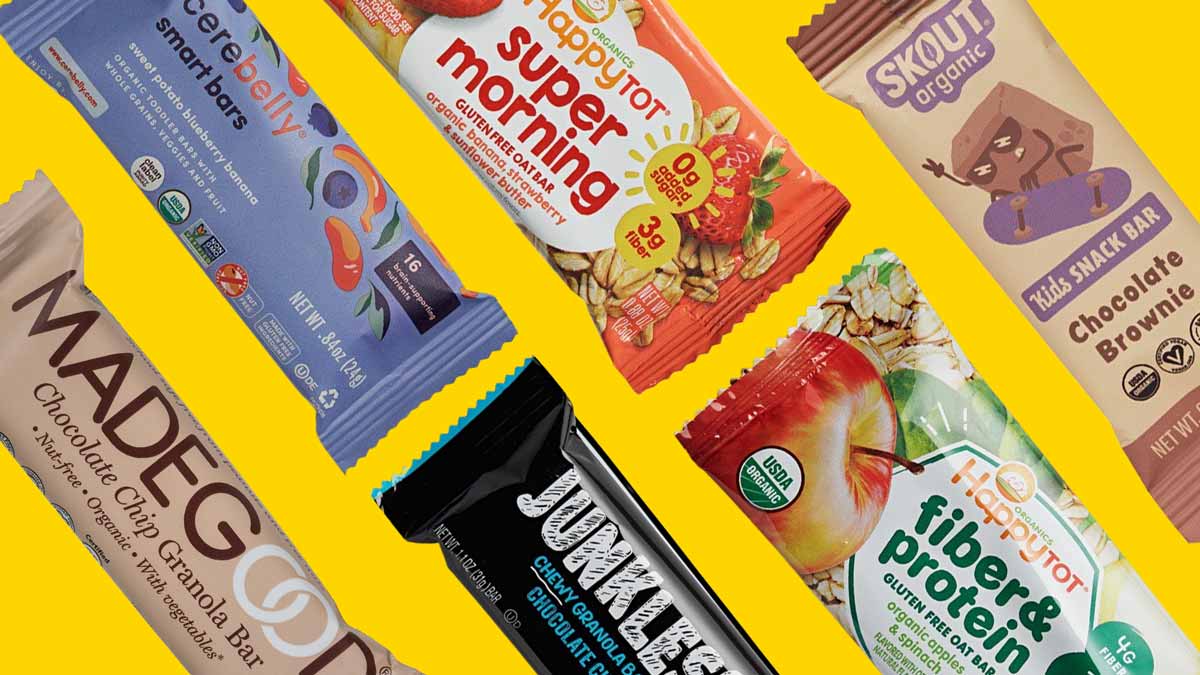Just like bars sold to adults, kids’ bars come adorned with multiple, healthy-sounding claims like “made with whole grains” and “only organic ingredients.” While these claims may be technically true, they often don’t tell the whole story. “For that, you really need to turn the box around and read the ingredients and the Nutrition Facts panel,” says Keating.
If a package claim says “made with whole grains,” for instance, you’d want whole-grain oats or another type of whole grain to be near the top of the list to ensure the product has a good amount of that ingredient. Many of the bars we tested did have whole grains high up on the list. But several didn’t. For example, Clif Kid ZBar Protein Chocolate Chip Bar advertises “made with organic oats,” but oats are fourth on the ingredients list, after tapioca syrup, brown rice flour, and whey protein concentrate.
More than a third of the bars were labeled “no high fructose corn syrup.” But that doesn’t mean no added sugars—all the bars that made this claim had other sources of added sugars, such as cane sugar, honey, agave syrup, or tapioca syrup.
Also, while a bar made with all organic ingredients sounds healthy, that doesn’t always mean it’s nutritious. For example, we found that many of the bars displaying the USDA Organic seal contain more than our recommended amount of added sugar.
As with all packaged foods, the fewer ingredients snack bars contain (and the more recognizable those ingredients are), the less processed and better for your kids the bars will be—but you still have to read labels. Lara Bar Kids Chocolate Chip Cookie Bar has just eight ingredients and no additives, for example, but it is higher in added sugars, with 8 grams per bar. Better choices might be Junkless Chewy Granola Bar Chocolate Chip (6 grams of added sugars) or Skout Organic Kids Snack Bar Chocolate Brownie (no added sugars), which are also made with a shorter list of recognizable ingredients.
Source link
